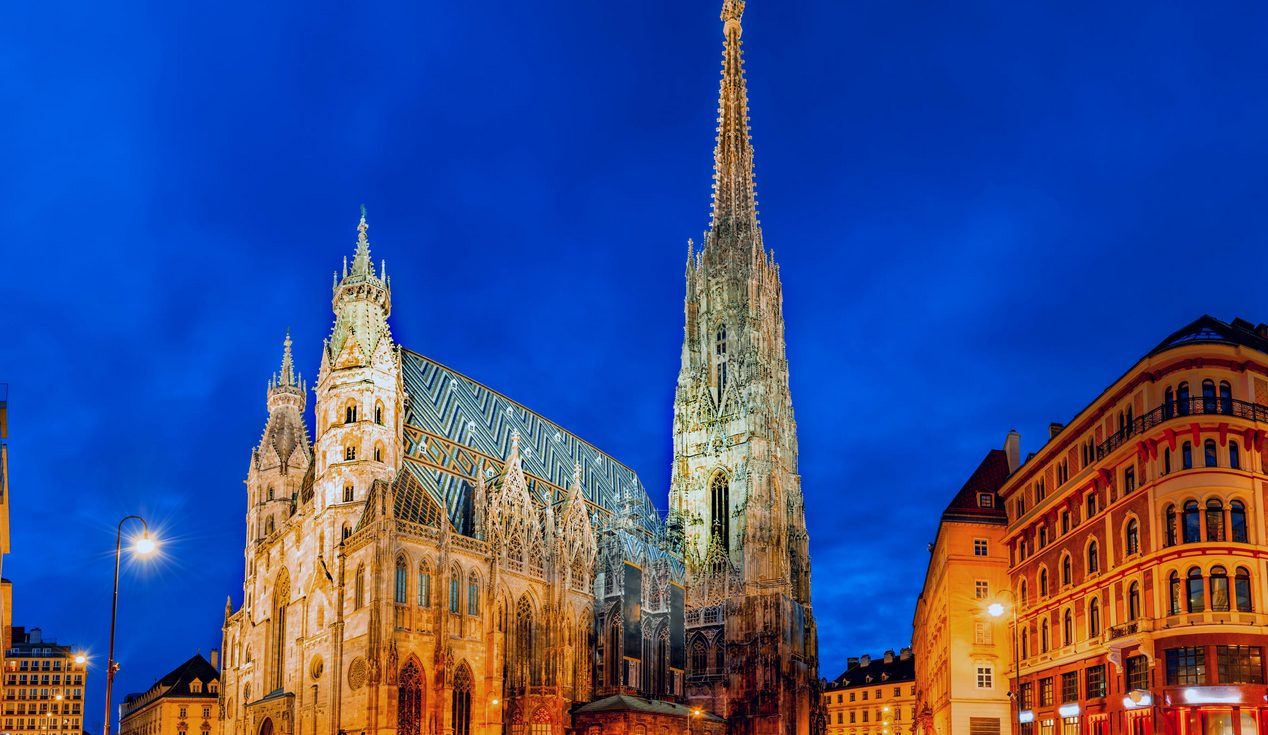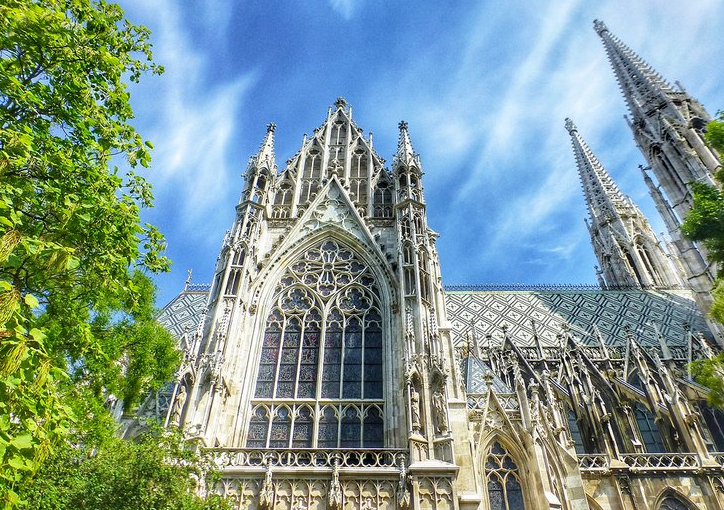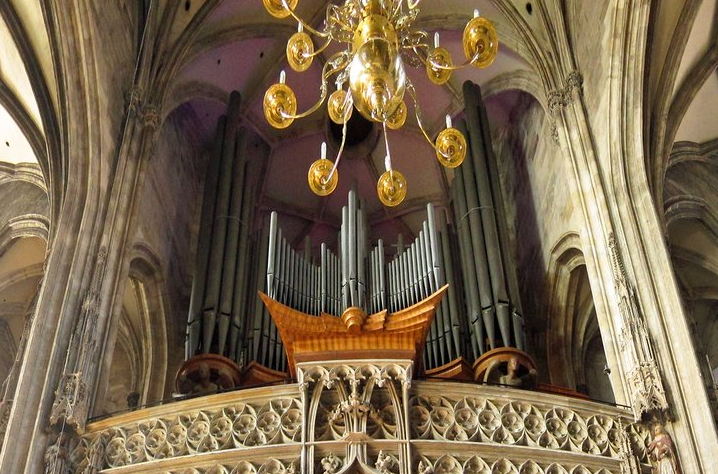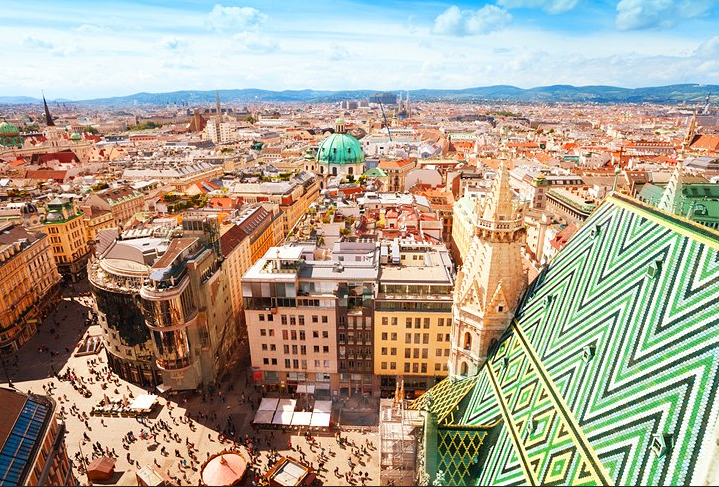Investigating St. Stephen’s House of prayer, Vienna wwneed.com
St. Stephen’s House of prayer (Stephansdom) isn’t just the super Roman Catholic church in Vienna – and the seat of the city’s Ecclesiastical overseer – it’s likewise quite possibly of Austria’s most famous fascination, inviting in excess of 1,000,000 visitors every year. With its 137-meter-high tower and lavishly embellished rooftop, it’s the city’s most significant Gothic building and addresses eight centuries of design history.
All that remaining parts of the first thirteenth century structure are the enormous entryway and the Rapscallion Pinnacles (Heidentürme), while broad reproduction in Gothic style occurred in the fourteenth hundred years. Later augmentations incorporate the consummation of the ensemble and the Sanctuaries of St. Eligius, St. Tirna, and St. Catherine, while the South Pinnacle, the Nave, and the Church of St. Barbara were included the fifteenth 100 years.
During WWII the structure experienced almost complete annihilation. Its remaking, from 1948 until 1962, ended up being an enormous mutual exertion including the entire of Austria, exhibiting the country’s energy to reestablish this previous image of the country’s distinguished past.
To dive more deeply into this must-see Austrian fascination, make certain to peruse our manual for investigating St. Stephen’s Basilica, Vienna.
St. Stephen’s House of prayer Features
The main thing you’ll see as you enter Vienna’s fabulous St. Stephen’s House of God is the Late Romanesque Monster’s Entryway. This great component is prominent for its remarkably rich ornamentation of mythical beasts, birds, lions, priests, and evil spirits, and was named after the mastodon bone found during development in 1443.
Likewise significant is the Cleric’s Door. Initially held for female guests, it flaunts fine metaphorical figures from 1370, alongside various emblems. The Vocalist Door was the passage for male guests, and is outstanding for its figures of the Missionaries and the legend of St. Paul dating from 1378.
The extensive three-aisled inside of St. Stephen’s is partitioned by bunched points of support on which stand life-size sculptures, including one of St. Christopher dating from 1470. The sixteenth century podium is the main show-stopper in the nave, a work of art of Late Gothic model beautified with the figures of the Four Dads of the Congregation.
On the plinth there’s a portrayal of the stone worker, Expert Pilgram, cut in the posture of an Unwelcome voyeur. The Workers’ Madonna dates from 1340 and, as indicated by legend, was made after a house keeper went to the Virgin for help subsequent to being wrongly blamed for robbery (she was not long after demonstrated honest).
St. Stephen’s Church Organ and Ensembles
Another inside feature is the brilliant Late Gothic Organ Case from 1513, likewise by Pilgram (he’s the figure with the compass and set square). The church building’s breathtaking organ is something truly amazing – and hear. Back in real life in 2020 after a significant reclamation, this “new” organ as a matter of fact comprises of two instruments that can be played together, and flaunts in excess of 12,000 lines. You can hear this sublime instrument in real life during routinely planned presentations and shows (look at the house of prayer’s true site underneath for subtleties).
Among the most remarkable of the church building’s numerous Early Gothic stone figures is a particularly fine Holy messenger of the Annunciation and a sculpture of Our Woman the Protectress in the Ladies’ Ensemble. Different features incorporate the Wiener-Neustadter Special raised area from 1447 and the dark marble High Raised area from 1640, its sculptures addressing the supporter holy people of the region, Leopold and Florian, and St. Roch and St. Sebastian, who were summoned in season of plague.
Additionally significant is Friedrich III’s Brought Mausoleum up in the south ensemble. Made of red marble and including an amazing size sculpture of the Ruler encompassed by crests, the plan is by Dutch craftsman Niclas Gerhaert van Leyden (1467-1513), who likewise made the highest point of this Gothic grave. The fifteenth century Late Gothic Shelter over the Leopold Special raised area is likewise worth seeing, similar to the Pötscher Madonna, an object of reverence in Austria and Hungary since the Clash of Zenta in 1697 while, as per legend, tears gushed from the eyes of the Madonna for a fortnight at the hour of the fight against the Turks.
St. Stephen’s Basilica Sanctuaries
The first of numerous sanctuaries you’ll see after entering St. Stephen’s House of God is the Tirna Sanctuary. Implicit 1359, it’s the entombment spot of Sovereign Eugene, prestigious as the victor of the Turks. Notwithstanding the fifteenth century Cross over the special raised area, take a look at the facial hair growth of Christ: it’s made of human hair and, as per legend, is as yet developing.
The most prominent highlights of the Catherine Sanctuary are its marble text style from 1481, and the reliefs on the 14-sided bowl portraying Christ, John the Baptist, and the Twelve Witnesses. Likewise important, on its plinth, are the Four Evangelists. Likewise worth visiting is the Eligius Church, or Dukes’ Sanctuary. Here, you’ll track down various significant fourteenth century sculptures.
Climb the House of prayer Pinnacles
St. Stephen’s Church is especially well known for its great pinnacles, which have ruled Vienna’s horizon for a really long time. The tallest of these is the Steffl, as the Viennese call the South Pinnacle. Started in 1356, it stands 137-meters high and is viewed as the most gorgeous German Gothic pinnacle in Europe on account of elements like the sculptures underneath the luxuriously ornamented shelters on the subsequent floor.
While it’s an intense move up the 343 twisting moves toward the Watch Room, it’s worth the effort for the tremendous perspectives. They are viewed as the best perspectives over Vienna’s memorable downtown area, including the wonderful Hofburg and the fabulous Belvedere Royal residence. It likewise intrigues with the information that this perspective was utilized as soon as the 1400s by guardians watching out for flames.
Additionally worth visiting is the House of God’s North Pinnacle, home to the monstrous Pummerin Ringer, rung exclusively on extraordinary events like New Year’s Eve. A quick lift takes guests to a review stage where you can get a very close gander at the church’s renowned rooftop tiles.
The Mausoleums and the Basilica Fortune
One of the top activities while visiting St. Stephen’s Church is to visit the high priority Mausoleums, the entry to which is through a chamber under the North Pinnacle. Open just as a feature of a directed visit, they stretch out from the House of God Ensemble the whole way to Stephansplatz and incorporate the bones of around 10,000 Viennese residents piled up in levels (this part isn’t available to general society).
Built toward the finish of the fourteenth 100 years to house stays from the area’s stuffed memorial parks, the Mausoleums were shut in 1783. Today, the significant fascination is the Ducal Vault, which Rudolf IV had developed for the Habsburgs in 1363.
Additionally worth seeing is the House of God Fortune. Situated in the West Display, this entrancing show houses large numbers of the church building’s generally significant – and important – objects.
Visiting St. Stephen’s Church
An assortment of English language directed voyages through St. Stephen’s Church are accessible. The most extensive is the Comprehensive Visit incorporating the house of God, the tombs, both the south and north pinnacles, and the Church building Fortune. Individual visits can likewise be reserved for explicit region of the house of prayer, alongside extraordinary 90 minute night visits, which incorporate a tomfoolery rooftop walk and a visit to the basilica storage room, Saturdays from July to September.
An extraordinary choice for those needing to take in other top vacation spots in the city is to join a city strolling visit through Vienna. Notwithstanding the church building, features of this fun 2.5-hour, little gathering directed visit incorporate the brilliant Hofburg Majestic Castle, the renowned Spanish Riding School, and different milestones like Legends’ Square.
Where to Remain close to St. Stephen’s Basilica
We suggest these magnificent inns inside strolling distance of St. Stephen’s Basilica in Vienna:
- The Guesthouse Vienna: This extravagance store lodging highlights jazzy stylistic layout, a brasserie, and pastry kitchen, as well as relaxed eating patio.
- Inn Kaiserhof Wien: Well known for its mid-range estimating and exquisite stylistic layout, Inn Kaiserhof highlights a great free breakfast.
- Hollmann Beletage: This reasonable store inn highlights contemporary style, superb staff, and a flavorful breakfast.
- MEININGER Inn Wien Downtown Sissi: This financial plan inn highlights present day stylistic theme, a mutual kitchen, pool table, and family rooms.
3.Shopping: The church works an internet based store selling DVDs, Albums, and books connecting with its set of experiences and music, as well as strict things and gifts.
Getting to St. Stephen’s Church building
- By walking: St. Stephen’s Church building is inside strolling distance of Vienna’s downtown area and its significant vacation spots.
- By Transport: The church building is all around served by Vienna’s transport administration (Courses 1A, 2A, or 3A).
- By U-Bahn (Metro): The closest tram station is Stephansplatz.
- Via Train: Vienna is very much served by all significant rail courses.
- By Street: Likewise with most significant European urban communities, quite a bit of Vienna’s downtown area is assigned as people on foot as it were. In the event that driving is an unquestionable necessity, park on the city’s edges and utilize public travel.
- Stopping: No on location public stopping is accessible.
Address
Stephansplatz 3, 1010 Vienna, Austria
Vienna’s most significant milestone, St. Stephen’s Basilica is the substance of Stephansplatz, a significant square that denotes the city’s geological focus. Noted for its fascinating blend of new and old design styles, it’s a superb spot to just hang out and watch the world pass by from the solace of a bistro porch, or maybe do some shopping.
In the event that you’re actually craving for somewhat more touring, make certain to visit the numerous notable old structures coating the square. Specifically compelling are No. 2, the Globe (Zur Weltkugel); No. 3, the Political race House (Das Churhaus); and negative. 7, the Diocese supervisor’s Castle.
Likewise significant are various shaded stones that mark the blueprint of the Church of Mary Magdalene, in which entombment administrations were once held. First archived in 1378, it copied down in 1781 and was rediscovered during development of the Stephansplatz U-Bahn station.






